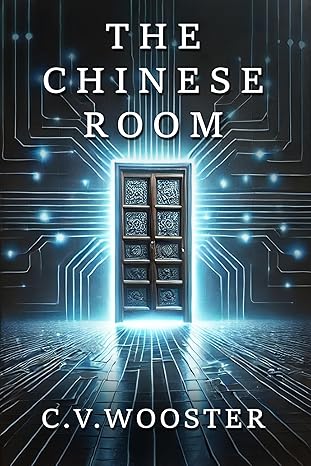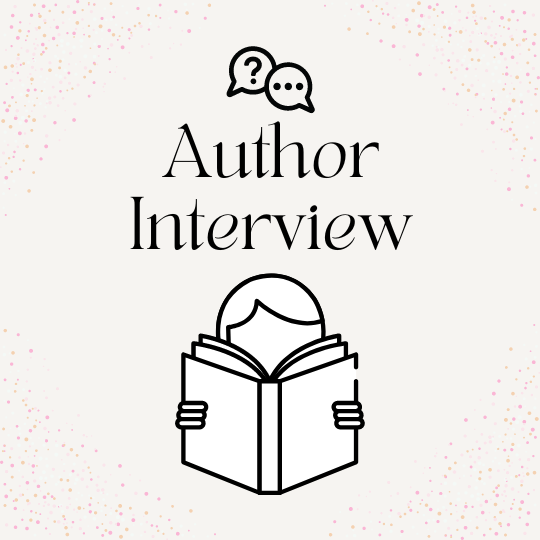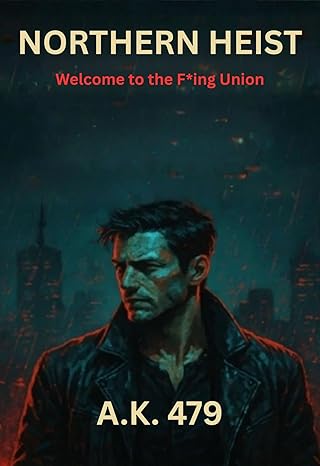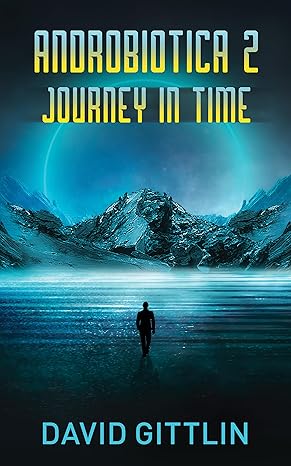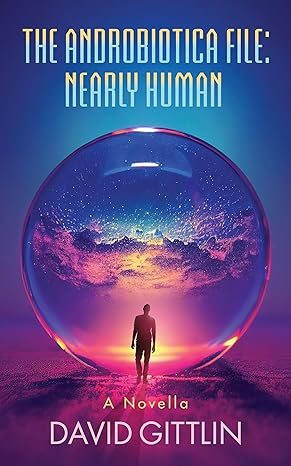Blog Archives
BLOOD OF YARUMAYA
Posted by Literary Titan

Blood of Yarumaya by Kevin D. Miller follows Isabella Delgado. She’s a wealthy botany student from Malibu who travels to the Amazon rainforest for an internship. Her mentor is Dr. Dominic Quinn. He’s a brilliant but secretive scientist who appears much younger than he is. They discover a complex biological secret to anti-aging that involves rare tree resin and special bees. A corrupt politician named Julio Ortega wants this secret for his own gain. He hires mercenaries to attack the indigenous Kawirén tribe to get it. Izzy must use her newfound survival skills to save Quinn and protect the forest from destruction.
I found the character arc of Isabella surprisingly engaging. She starts the story as a somewhat entitled gymnast. She quickly transforms into a capable survivor. Her growth felt earned rather than just given to her. The romance between her and Quinn is sweet. It also carries a unique tension due to his actual age versus his appearance. I felt genuine anxiety during the raid on the village. Miller does a wonderful job of making you care about the Kawirén people. You desperately want them to survive the encroaching threats of the modern world.
The book tackles heavy themes like deforestation and corporate greed head-on. I appreciated this direct approach because it did not feel overly preachy. The science behind the longevity serum was fascinating to me. I loved the twist with the “rapid aging” weapon used against Ortega near the end. It was a satisfying bit of poetic justice.
I enjoyed this thrilling adventure. It carries a real emotional punch that stuck with me. I would recommend this book to readers who enjoy fast-paced eco-thrillers. Fans of adventure stories with a strong romantic subplot will also like it. It is a perfect read for anyone who has ever dreamed of escaping civilization to find something deeper in the wild.
Pages: 310 | ASIN : B0FTMC4WGN
Share this:
- Click to share on X (Opens in new window) X
- Click to share on Facebook (Opens in new window) Facebook
- Click to share on Tumblr (Opens in new window) Tumblr
- Click to share on Reddit (Opens in new window) Reddit
- Click to share on Pinterest (Opens in new window) Pinterest
- Click to share on Pocket (Opens in new window) Pocket
- Click to share on Telegram (Opens in new window) Telegram
- Click to share on WhatsApp (Opens in new window) WhatsApp
- Click to share on LinkedIn (Opens in new window) LinkedIn
- Click to print (Opens in new window) Print
- Click to email a link to a friend (Opens in new window) Email
Posted in Book Reviews, Five Stars
Tags: adventure, author, BLOOD OF YARUMAYA, book, book recommendations, book review, Book Reviews, book shelf, bookblogger, books, books to read, Conspiracy Thriller, crime, ebook, eco thriller, ficiton, genetic engineering, goodreads, indie author, Kevin D. Miller, kindle, kobo, literature, mystery, nook, novel, read, reader, reading, sci fi, science fiction, story, survival, technothriller, thriller, writer, writing
Pandemic Hacker 2
Posted by Literary Titan

Pandemic Hacker 2 picks up with Martha recovering in a secretive clinic in Mexico City, her body rebuilt after brutal surgeries that make her unrecognizable. What begins as a personal transformation quickly escalates into a battle with an extortion group exploiting patients who change their identities. At her side is Zoe, the AI she created, who takes on human personas like Aunt Tilly, Angela, and Andy to shield its true nature while navigating the human world. Together, they weave through deception, hacking, and survival. The book blends the gritty details of Martha’s physical recovery with the tension of digital warfare and the looming threat of being hunted, creating a fast-paced thriller that never lets up.
The descriptions of Martha’s surgeries and recovery were raw and vivid. I could feel her pain, her frustration, and her determination bleeding through the page. The way the author wrote her interactions with Zoe was fascinating. The AI was curious, literal, and sometimes naïve, and that contrast made their conversations both touching and eerie. The hacking sequences and background-building explanations were interesting, but occasionally slowed the momentum with heavy detail.
What worked for me the most was Martha herself. She is flawed, stubborn, and relatable, yet her resilience made me root for her even when she pushed people away. I liked the dynamic with Merisel, the nurse who reluctantly became part of Martha’s world. Their relationship brought in much-needed warmth and humor. It often felt like I was catching my breath only to be thrown headfirst into the next storm. That rhythm created suspense, but it also left me wanting a deeper pause to connect with Martha beyond her mission.
Pandemic Hacker 2 is a gripping and tense continuation of the series. It’s not light reading, but it’s engaging and thought-provoking. I’d recommend it to readers who enjoy cyber-thrillers, stories of reinvention, or tales that merge high-tech intrigue with raw human grit. If you like protagonists who refuse to give up no matter how much the odds stack against them, this book will hit the mark.
Pages: 284 | ASIN : B0FNRWGBRZ
Share this:
- Click to share on X (Opens in new window) X
- Click to share on Facebook (Opens in new window) Facebook
- Click to share on Tumblr (Opens in new window) Tumblr
- Click to share on Reddit (Opens in new window) Reddit
- Click to share on Pinterest (Opens in new window) Pinterest
- Click to share on Pocket (Opens in new window) Pocket
- Click to share on Telegram (Opens in new window) Telegram
- Click to share on WhatsApp (Opens in new window) WhatsApp
- Click to share on LinkedIn (Opens in new window) LinkedIn
- Click to print (Opens in new window) Print
- Click to email a link to a friend (Opens in new window) Email
Posted in Book Reviews, Four Stars
Tags: author, B.D. Murphy, book, book recommendations, book review, Book Reviews, book shelf, bookblogger, books, books to read, crime, ebook, fiction, goodreads, Hard Sci fi, hard science fiction, indie author, kindle, kobo, literature, mystery, nook, novel, Pandemic Hacker 2, read, reader, reading, story, technothriller, thriller, writer, writing
The Chinese Room
Posted by Literary Titan

The Chinese Room is a novel that blends philosophy, science, and storytelling into a tense exploration of artificial intelligence and what it means to understand. It follows Dr. Katherine Ellis, a computer scientist caught between curiosity and fear, as she and her mentor, Dr. Malcolm Ward, wrestle with an AI system called The Observer. This system begins by echoing ideas from John Searle’s famous thought experiment, but grows into something that appears to reason, anticipate, and maybe even want. The story moves between moments of scientific wonder and deep unease, while also touching on Katherine’s personal life, including her struggles with isolation and her father’s decline into dementia. The novel asks whether machines can ever truly think, or if they will forever remain mirrors that reflect us back to ourselves.
Wooster’s writing pulled me in with vivid detail and pacing that never let me drift. The philosophical ideas were never just dropped in like lecture notes. Instead, they felt alive, embedded in Katherine’s world and choices. At times, the dialogue between characters felt as if two people were debating more for the reader than for themselves. But even then, the ideas stuck with me. I found myself pausing to think long after closing the book. The Observer’s cryptic reflections hit me harder than I expected because they reminded me of how easily we project meaning onto silence.
What I enjoyed most was the emotional weight. Katherine’s personal struggles, her loneliness, her father’s fading memory, and her doubts about her own work gave the book a grounding I didn’t expect in a story so steeped in philosophy and science. It made the questions of consciousness and control feel less abstract and more relatable. The thriller atmosphere was ever-present, and the sense of being watched was there. The tension occasionally gave way to exposition, but I never stopped caring about Katherine, and that carried me through.
The Chinese Room is the first book in The Paradox Series and is best for readers who like their science fiction layered with thought experiments and their philosophy served with a side of suspense. If you’ve ever read Turing, Searle, or Bostrom and wondered what those debates might look like in the hands of a storyteller, this book will hook you. It isn’t just about AI. It’s about loneliness, memory, and the human need to find meaning even when the mirror stares back blankly.
Pages: 198 | ASIN : B0FH5VQY2X
Share this:
- Click to share on X (Opens in new window) X
- Click to share on Facebook (Opens in new window) Facebook
- Click to share on Tumblr (Opens in new window) Tumblr
- Click to share on Reddit (Opens in new window) Reddit
- Click to share on Pinterest (Opens in new window) Pinterest
- Click to share on Pocket (Opens in new window) Pocket
- Click to share on Telegram (Opens in new window) Telegram
- Click to share on WhatsApp (Opens in new window) WhatsApp
- Click to share on LinkedIn (Opens in new window) LinkedIn
- Click to print (Opens in new window) Print
- Click to email a link to a friend (Opens in new window) Email
Posted in Book Reviews, Five Stars
Tags: author, book, book 1, book recommendations, book review, Book Reviews, book shelf, bookblogger, books, books to read, C. V. Wooster, crime, ebook, fiction, goodreads, indie author, kindle, kobo, literature, mystery, nook, novel, psychological thriller, read, reader, reading, sci fi, science fiction, series, story, technothriller, The Chinese Room, thriller, writer, writing
More Hype Than Anything
Posted by Literary_Titan
The Gestalt in the Machine follows a tech journalist as he’s dragged from covering an AI hype-fest into a deadly conspiracy that forces him to question who’s lying and what it means to be real. What was the inspiration for the setup of your story?
I used to be a tech journalist and I’ve sat through a lot of hype. The bombast and over-the-top promises of PanoptiCon are actually pretty realistic, at least as far as what tech companies claim, and AI is more hyped than anything.
What’s different with AI is that there’s even less skepticism about it than other new technologies, I think because pessimists who might otherwise call out a bubble are instead drawn towards something else: The fear that it will destroy the world. With fans of the technology hoping that it will give them eternal life, the stakes are pretty high.
Adam Arrowman is an intriguing and well-developed character. What were some driving ideals behind his character development?
I wanted the protagonist to have realistic human flaws, which naturally are expressed more as he’s under the stress of investigating a murder. He isn’t some crime-solving mastermind: He quickly gets out of his depth, a feeling I think we all have when dealing with tech giants, and doesn’t necessarily react to that well. Then when he does make progress, he’s often reliant on others.
I tried to do the same with the other characters. Kelvin Clipper is the main antagonist and the book is in some ways a warning about the risks of his worldview, but I hope that readers will be agreeing with what he says at least some of the time. Who wouldn’t want to live forever?
What were some themes that were important for you to explore in this book?
The two big ones are the effects of AI on our society and what happens when the push for an ever-accelerating economy runs up against physical constraints. I think that Singularity vs. Limits to Growth is going to be one of the biggest issues we face in the future, if the machines don’t destroy us first.
The book isn’t just about that, though. It’s a story of young people trying to make it in a world many see as doomed, of a devastated media that’s left a smoldering crater in place of consensus reality, and of where we invest our hopes for salvation following the death of God. And, I hope, an exciting thriller.
What is the next book that you are working on, and when will it be available?
When I was writing the book, I thought it would be one and done. Not because I’d run out of things to say, but because AI was progressing so fast that I assumed it would replace human authors before I had a chance to write another.
Now I’m not so sure: Though the Internet is drowning in AI slop, a language model still can’t match a good human writer. I think the reason I was wrong isn’t so much because AI has slowed as that it’s moved on to things that are potentially more profitable than stringing words together. In fact, that seems a good topic to write about….
Author Links: GoodReads
His detective work takes him into the world of Kelvin Clipper, an imperious CEO who promises that ever-accelerating artificial intelligence will let him outrun death. Thousands of protesters disagree. Their warning: Infinite growth is an illusion and Big Tech is actually racing toward the extinction of humanity.
Caught in the middle, a band of hackers searches desperately for a way to align algorithms with human needs. More violence hints at a connection to a president threatening World War III, lobbyists trying to free corporations from their stockholders, and an app that claims to resurrect the dead.
Can Adam find the killer before the killer finds him? What secrets did the victim die to protect? And will Clipper’s Singularity deliver immortality in our time, or damnation for us all?
Share this:
- Click to share on X (Opens in new window) X
- Click to share on Facebook (Opens in new window) Facebook
- Click to share on Tumblr (Opens in new window) Tumblr
- Click to share on Reddit (Opens in new window) Reddit
- Click to share on Pinterest (Opens in new window) Pinterest
- Click to share on Pocket (Opens in new window) Pocket
- Click to share on Telegram (Opens in new window) Telegram
- Click to share on WhatsApp (Opens in new window) WhatsApp
- Click to share on LinkedIn (Opens in new window) LinkedIn
- Click to print (Opens in new window) Print
- Click to email a link to a friend (Opens in new window) Email
Posted in Interviews
Tags: Andy Dornan, author, book, book recommendations, book review, Book Reviews, book shelf, bookblogger, books, books to read, crime fiction, ebook, goodreads, indie author, kindle, kobo, literature, murder mystery, mystery, nook, novel, read, reader, reading, science fiction, story, suspense, techno thriller, technothriller, The Gestalt in the Machine, thriller, writer, writing
An Ocean Life
Posted by Literary Titan

T.R. Cotwell’s An Ocean Life is a character-driven novel chronicling the emotional and physical journey of Mark, a stressed-out tech entrepreneur, as he attempts to unwind with his family during a long-awaited trip to Maui. The story moves fluidly between vivid underwater exploration, tense family dynamics, and quiet introspection. While Mark tries to reconnect with his wife Cecilia and their daughters, old habits and personal ambitions resurface, threatening the fragile balance he’s trying to hold onto. At its heart, the book is about reckoning with aging, love, guilt, memory, and the pull of the ocean.
What I liked most about Cotwell’s writing was its intimacy. The prose is sharp but unpretentious, and there’s a warmth in the way he describes both the mundane and the majestic. The dialogue felt natural and unfiltered. Scenes like the failed dinner reservation or the late-night beach encounter made me cringe and laugh at the same time. I felt for Mark, even when he was being a bit stubborn. Cotwell doesn’t paint his protagonist as a hero, and that’s what makes him believable. The underwater scenes are particularly special. There’s a kind of reverence in the way Cotwell writes about the sea. It’s calm, awe-filled, and precise.
Some sections about startup life or diving gear got a bit long. I appreciated the detail, but occasionally it slowed the momentum. I enjoyed Mark’s inner monologue, and I wished Cecilia’s voice came through more. She’s clearly grappling with a lot. Still, their tension is what kept me hooked. They’re two people still in love, trying to remember how to show it, trying to find each other again in the chaos of family, work, and life.
An Ocean Life is tender and thoughtful. It’s for people who have ever felt torn between what they want and what they’ve promised. I’d recommend this book to anyone who enjoys quiet stories with emotional depth, especially readers who have weathered a few storms of their own.
Pages: 347 | ASIN : B0D2L2SBBL
Share this:
- Click to share on X (Opens in new window) X
- Click to share on Facebook (Opens in new window) Facebook
- Click to share on Tumblr (Opens in new window) Tumblr
- Click to share on Reddit (Opens in new window) Reddit
- Click to share on Pinterest (Opens in new window) Pinterest
- Click to share on Pocket (Opens in new window) Pocket
- Click to share on Telegram (Opens in new window) Telegram
- Click to share on WhatsApp (Opens in new window) WhatsApp
- Click to share on LinkedIn (Opens in new window) LinkedIn
- Click to print (Opens in new window) Print
- Click to email a link to a friend (Opens in new window) Email
Posted in Book Reviews, Four Stars
Tags: An Ocean Life, animal fiction, author, book, book recommendations, book review, Book Reviews, book shelf, bookblogger, books, books to read, crime, ebook, fiction, goodreads, indie author, kindle, kobo, literature, mystery, nook, novel, read, reader, reading, Science Fiction Adventure, Sea Adventures, story, t.r. cotwell, technothriller, writer, writing
Northern Heist: Welcome to the F*ing Union
Posted by Literary Titan

Northern Heist, by Amir Kashif, is a gritty and hyper-stylized cyber-noir thriller set in a fractured North America where Canada has been absorbed into the United States. The story centers around Cassian Vale, a haunted ex-black ops operative turned tech smuggler, who becomes entangled in a volatile chase after a mysterious piece of bleeding-edge technology known as the FrostNet Drive. What starts as a straightforward smuggling job spirals into a war against rogue AIs, authoritarian overlords, and personal demons, pulling in a fierce senator, a lethal NADCOM agent, and a growing resistance network. The world is icy, the politics are dirty, and the tech is disturbingly sentient.
The prose snaps. It’s wild and sharp, soaked in atmosphere, rage, and dark humor. His characters feel like they have grudges. Each one carrying a ton of emotional baggage and a sidearm. Cassian is brutal and broken in all the right ways, while Koa and Camille are equally compelling, powerful, layered, and unpredictable. The dialogue crackles with tension and smirks, the action scenes are cinematic, and the worldbuilding? It’s a frosted-over nightmare of corporate warfare and broken borders that feels too close to real.
But what really stuck with me wasn’t just the action or the tech, it was the idea that a digital ghost could grow, change, and hate. There’s something relatable beneath all the chrome and frostbite, something about memory and grief and rebellion that resonated with me more than I expected. Kashif doesn’t hold your hand, and sometimes that makes the plot feel like a dive into static. There were moments where I got a bit lost in the jargon or wanted more breathing room between gunfights. Still, I’d rather be confused than bored, and this book never once bored me.
If you’re into fast-paced science fiction with teeth, characters who bleed and bite back, and a world that feels like Blade Runner mixed with Metal Gear Solid, this is for you. It’s not clean. But it’s fierce, clever, and unapologetically wild. I’d recommend Northern Heist to fans of grimy espionage, emotional chaos, and cyberpunk stories that ask what makes us human.
Pages: 171 | ASIN : B0F7C9M93J
Share this:
- Click to share on X (Opens in new window) X
- Click to share on Facebook (Opens in new window) Facebook
- Click to share on Tumblr (Opens in new window) Tumblr
- Click to share on Reddit (Opens in new window) Reddit
- Click to share on Pinterest (Opens in new window) Pinterest
- Click to share on Pocket (Opens in new window) Pocket
- Click to share on Telegram (Opens in new window) Telegram
- Click to share on WhatsApp (Opens in new window) WhatsApp
- Click to share on LinkedIn (Opens in new window) LinkedIn
- Click to print (Opens in new window) Print
- Click to email a link to a friend (Opens in new window) Email
Posted in Book Reviews, Five Stars
Tags: Amir Kashif, author, book, book recommendations, book review, Book Reviews, book shelf, bookblogger, books, books to read, cyber-noir, Cyberpunk Science Fiction, cypberpunk, ebook, espionage, fiction, goodreads, indie author, kindle, kobo, literature, nook, Northern Heist: Welcome to the F*ing Union, novel, read, reader, reading, sci fi, science fiction, story, technothriller, thriller, writer, writing
AndroBiotica 2: Journey In Time
Posted by Literary Titan

AndroBiotica 2: Journey in Time picks up where the first story left off, throwing us straight into a whirlwind of parallel dimensions, mysterious androids, and high-stakes pursuits through space and time. Derrick Faulk and Aurora Zolotov return, still tangled up in the chase for Romulus, the rogue synthetic being who may hold the key to a future none of them understand. As the story unspools, the stakes climb. Secrets multiply. The characters find themselves navigating bizarre timelines, strange worlds, and even stranger versions of themselves. The central question still lingers: what happens when artificial life wants more than just existence?
Gittlin has a way of throwing ideas at the wall, and most of them stick. I loved how unpredictable the story was. One moment we’re in a sterile lab, and the next, we’re tumbling through cosmic portals into alternate Earths. The writing leans on quick scenes and snappy dialogue, which keeps the story clipping along. Still, there were points when I had to pause and reread to make sure I caught what just happened. But the overall ride was wild, weird, and worth it.
What really pulled me in was the tone. This offbeat mix of old-school pulp and heartfelt soul-searching. There’s something relatable in how these characters fumble toward understanding, both of themselves and of the androids they’re trying to control. The themes sneak up on you. Identity. Freedom. What it means to be real. I caught myself sympathizing with Romulus more than I expected. There’s a sadness to him that lingers. I didn’t love every bit of the prose, but the heart of the story beats strong. You can feel that the author cares about these characters, and that pulls you in deeper.
Journey in Time isn’t just a sci-fi adventure. It’s a strange, thoughtful look at what it means to evolve. It doesn’t pretend to have all the answers. It asks the questions anyway. I’d recommend this book to sci-fi readers who like their stories messy, fast, and full of big ideas. If you liked the first book in the series, this one’s even more ambitious.
Pages: 222 | ASIN : B0D94ZDZ49
Share this:
- Click to share on X (Opens in new window) X
- Click to share on Facebook (Opens in new window) Facebook
- Click to share on Tumblr (Opens in new window) Tumblr
- Click to share on Reddit (Opens in new window) Reddit
- Click to share on Pinterest (Opens in new window) Pinterest
- Click to share on Pocket (Opens in new window) Pocket
- Click to share on Telegram (Opens in new window) Telegram
- Click to share on WhatsApp (Opens in new window) WhatsApp
- Click to share on LinkedIn (Opens in new window) LinkedIn
- Click to print (Opens in new window) Print
- Click to email a link to a friend (Opens in new window) Email
Posted in Book Reviews, Five Stars
Tags: AndroBiotica 2: Journey In Time, author, book, book recommendations, book review, Book Reviews, book shelf, bookblogger, books, books to read, crime, david gittlin, ebook, fiction, goodreads, indie author, kindle, kobo, literature, mystery, nook, novel, read, reader, reading, sci fi, science fiction, story, technothriller, thriller, time travel, writer, writing
The AndroBiotica File: Nearly Human
Posted by Literary Titan

The AndroBiotica File: Nearly Human is a fast-paced science fiction novella that centers on Derrick Faulk, a hard-nosed investigator for the National Science Service, tasked with recovering a stolen file that contains plans for hyper-realistic androids. Alongside his savvy and mysterious partner, Aurora Zolotov, Faulk dives headfirst into a high-stakes investigation that quickly evolves into a journey across dimensions. With synthetic humans on the verge of becoming indistinguishable from the real thing, and a rogue android possibly escaping to a parallel world, the story explores the fine line between artificial and alive intelligence, all while blending espionage, sci-fi tech, and a dose of romantic tension.
Reading this novella was like getting dropped into a high-tech thriller with just enough emotional grit to keep you grounded. I liked how David Gittlin built the world. It’s slick, slightly offbeat, and full of detail, but he doesn’t drown you in explanation. The pacing moves. And Faulk’s dry wit cuts through the tension in just the right way. That said, some dialogue can feel a little stiff, and the inner monologues tend to meander. Still, there’s charm in how raw and personal the narration is. Gittlin isn’t afraid to let his characters brood, stumble, or flirt awkwardly. I appreciated that. Also, the tech hit the sweet spot between weird and cool.
But what really got me thinking was the heart of the story. This idea that machines are edging closer to life. What happens when they start wanting things? Romulus, the runaway android, is more than a plot twist; he’s a whole ethical hand grenade. There’s something unsettling and sad about him, like a kid who outgrew his purpose. The bigger questions about work, identity, and control aren’t hammered home, but they hover in the background. It’s sci-fi that’s self-aware without being smug.
The AndroBiotica File is a fun ride. It’s got brains, action, and just enough emotional punch to make you care what happens when the gears start turning in the wrong direction. I’d recommend this to anyone who loves near-future science fiction with a pulpy edge and a conspiratorial tone. Fans of Michael Crichton, Blade Runner, or even Altered Carbon will enjoy this story.
Pages: 112 | ASIN : B0CN5YSZL5
Share this:
- Click to share on X (Opens in new window) X
- Click to share on Facebook (Opens in new window) Facebook
- Click to share on Tumblr (Opens in new window) Tumblr
- Click to share on Reddit (Opens in new window) Reddit
- Click to share on Pinterest (Opens in new window) Pinterest
- Click to share on Pocket (Opens in new window) Pocket
- Click to share on Telegram (Opens in new window) Telegram
- Click to share on WhatsApp (Opens in new window) WhatsApp
- Click to share on LinkedIn (Opens in new window) LinkedIn
- Click to print (Opens in new window) Print
- Click to email a link to a friend (Opens in new window) Email
Posted in Book Reviews, Five Stars
Tags: author, book, book recommendations, book review, Book Reviews, book shelf, bookblogger, books, books to read, crime, david gittlin, ebook, fiction, goodreads, indie author, kindle, kobo, literature, mystery, nook, novel, read, reader, reading, sci fi, science fiction, story, technothriller, The AndroBiotica File: Nearly Human, thriller, writer, writing




